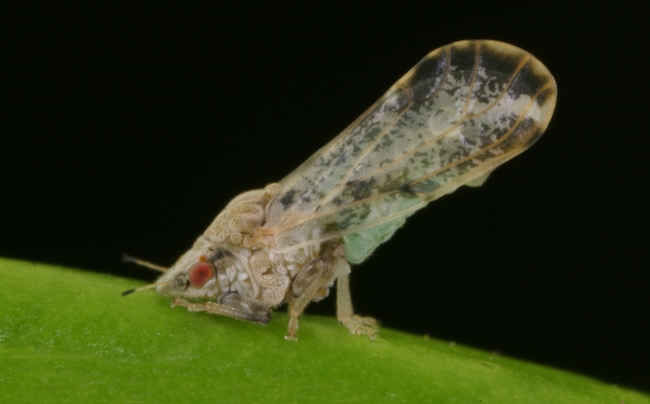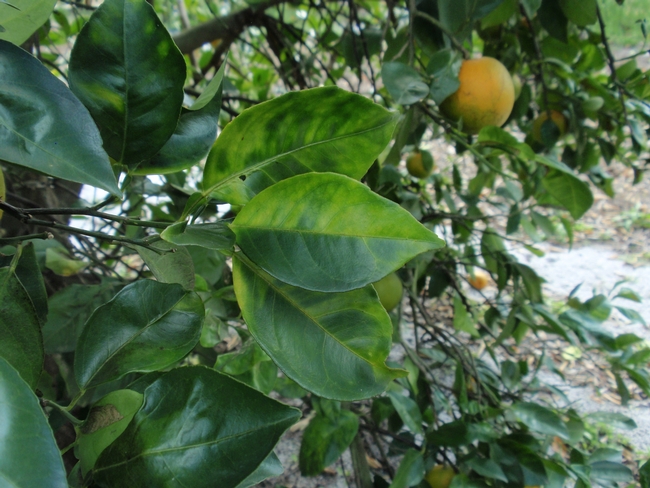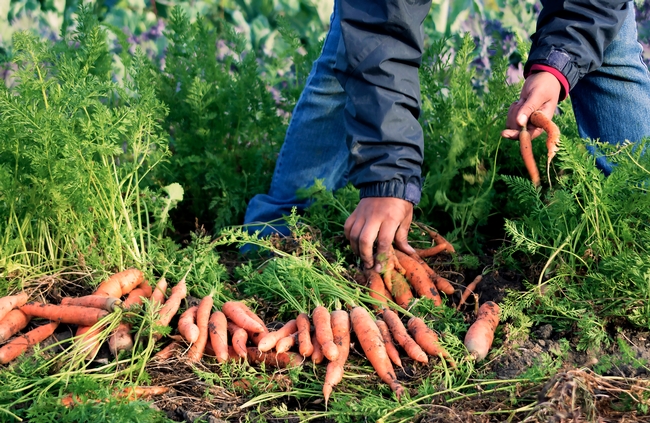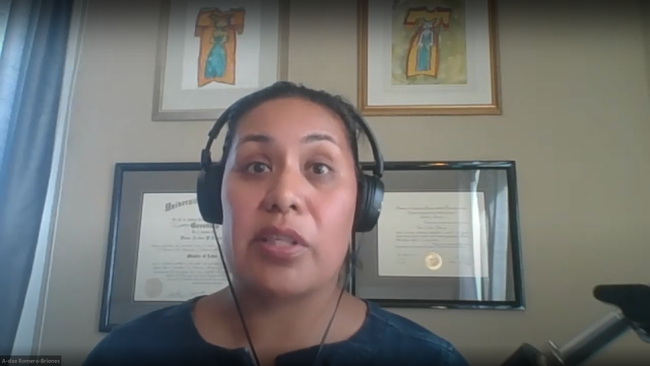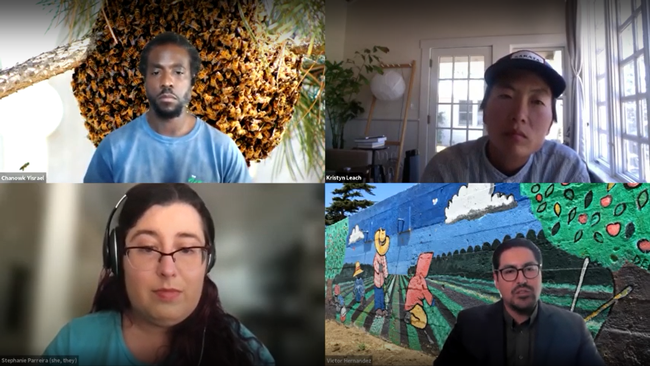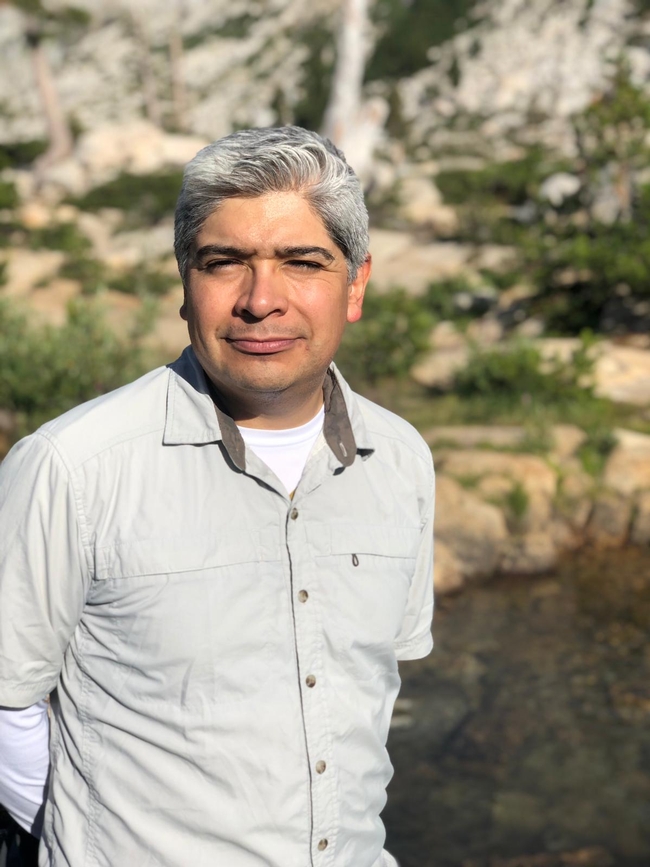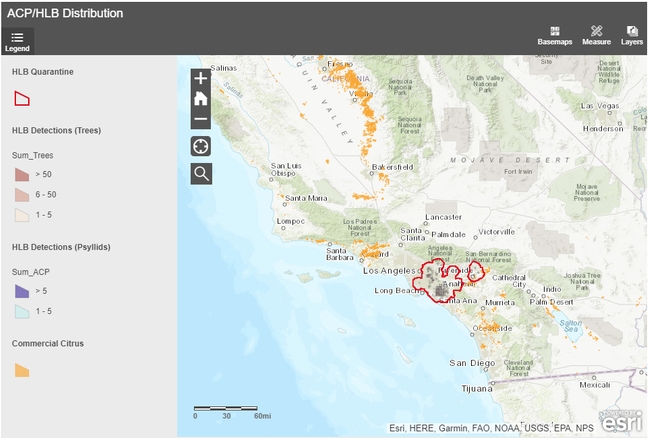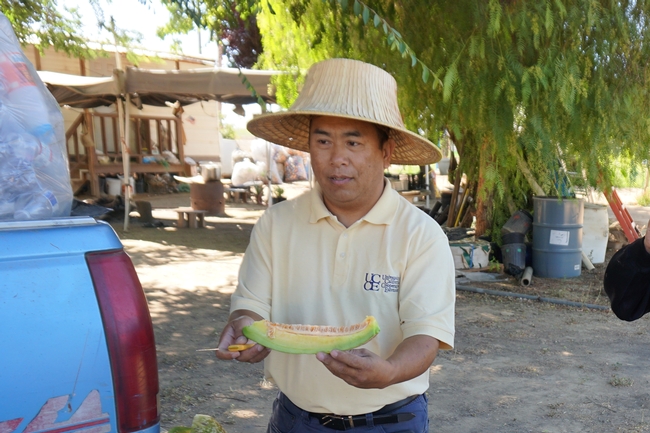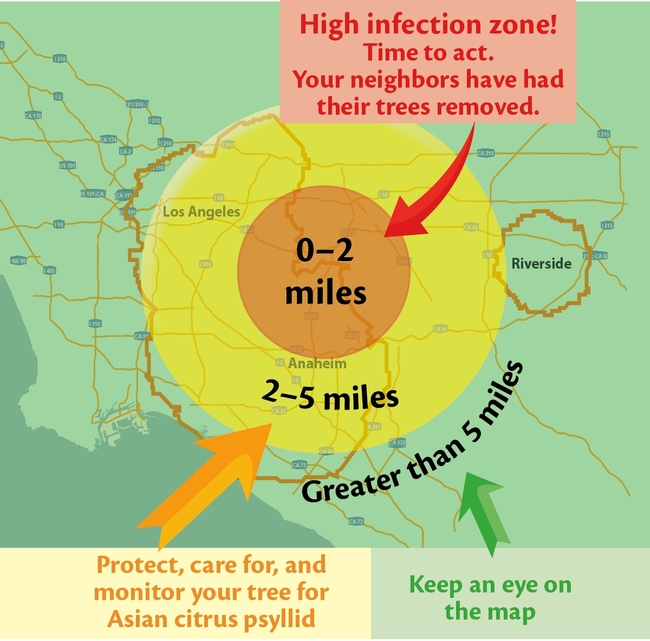Posts Tagged: asian
Asian citrus psyllid study: Vigilance urged but ‘no cause for panic’
Preliminary results indicate 3.5% of ACP collected showed signs of bacterium that can cause huanglongbing
An ongoing study in the commercial citrus groves of coastal Southern California is looking at whether Asian citrus psyllids – the insect vector of huanglongbing “citrus greening” disease – are carrying the bacterium that can cause HLB.
Thus far, the project has tested more than 3,000 adult ACP collected from 15 commercial citrus sites across the region, of which 138 – just over 3.5% – had some level of the bacterium present, according to researchers from UC Agriculture and Natural Resources, UC Davis, UC Riverside and the University of Arizona, Tucson.
“While the results are a cause for concern, the situation in California is much better than in Florida and Texas, where ACP carrying the bacterium make up the majority of the population and HLB is widespread in commercial citrus,” said Neil McRoberts, a UC Davis plant pathologist and UC Integrated Pest Management program affiliate advisor. “The results indicate that there is no room for complacency, but also no cause for panic.”
Since the first HLB-infected tree in California was found in 2012, nearly 4,000 infected trees have been detected and removed from residential properties in Southern California, mainly in Orange and Los Angeles counties. According to McRoberts, “to date, no HLB has been found in commercial citrus” in California.
He stressed, however, that the aforementioned ACP study – funded by the HLB Multi Agency Coordination Group and managed by USDA-APHIS – does not involve any testing of trees for HLB and focuses only on looking at the insect which spreads the bacterium.
McRoberts also emphasized that the project's detections of the bacterium cannot be considered “official” because the researchers' lab procedures differ from the official testing protocols of the California Department of Food and Agriculture.
“Follow-up sampling by CDFA staff would allow official samples to be collected for further investigation, but is entirely voluntary for the growers involved,” he said, adding that his research team is currently wrapping up the sampling phase of the project, with data analysis continuing into 2023.
While commending the “huge coordinated effort” by the California citrus industry, California Department of Food and Agriculture, UC ANR and other partners to suppress the ACP vector and slow the spread of HLB, McRoberts also urged continued vigilance.
“Our study results indicate that it is not time to declare the emergency status for ACP/HLB in California over – the situation is still evolving,” he said.
For further information about the research, contact Neil McRoberts at nmcroberts@ucdavis.edu or (530) 752-3248.
Farmers of color share their contributions, concerns in UC SAREP webinar series
When agricultural advisors came to the Cochiti Pueblo in New Mexico during the 1940s, they lined the irrigation ditches with concrete, in the name of boosting efficiency and productivity. But in single-mindedly focusing on water delivery, they neglected to consider how the previously inefficient seepage sustained nearby fruit trees.
Their actions, as well-intentioned as they might have been, disrupted the local ecosystem and killed the trees that had fed many generations, according to A-dae Romero-Briones, who identifies as Cochiti and as a member of the Kiowa Tribe.
“In my language, we call the extension agents ‘the people who kill the fruit trees,'” said Romero-Briones, director of the Food and Agriculture Program for the First Nations Development Institute, a nonprofit that serves Tribal communities across the mainland, Alaska and Hawaii.
The historically tense relationship between Indigenous peoples and government-affiliated programs is one of the many complex dynamics discussed in a six-part webinar series, “Racial Equity in Extension,” facilitated by UC Sustainable Agriculture Research and Education Program.
Making communities of color in the agricultural sector more visible is a priority for Victor Hernandez, a sociologist and outreach coordinator for the USDA's Natural Resources Conservation Service. Hernandez, who has organized “Growing Together” conferences for Latino and Black farmers, is trying to get more farmers of color to participate in the upcoming 2022 Agricultural Census.
“If we cannot quantify the demographic, we cannot justify the need,” emphasized Hernandez, explaining that his office uses the data to direct resources that advance equity in service, program delivery and distribution of funds.
A legacy of mistrust
At the same time, however, Hernandez also acknowledged the challenges in registering growers of color for the census, conducted by the USDA's National Agricultural Statistics Service. (According to Brodt, USDA's most recent agricultural census, dating to 2017, counts approximately 25,000 producers of color among 128,535 total producers in California.)
“Many of us that are considered socially disadvantaged or historically underserved…a lot of times our peoples come from [nations with] oppressive governments,” Hernandez said. “And so when you come to the United States and you begin to build your life here, to go and engage with the federal government is not the first knee-jerk reaction.”
On top of government mistrust and fears of deportation or detention, other immigrant groups have seen mainstream agriculture – borne by the “Green Revolution” wave across the globe – replace deep-rooted cultural practices, said Kristyn Leach of Namu Farm in Winters.
“It just makes these small farmers distrust our own knowledge, the knowledge that's existed for centuries – before the kind of current iteration of agriculture that we're situated within right now,” said Leach, who works to preserve the agricultural heritage of her Korean ancestors, and facilitates a farmers' collaborative called Second Generation that adapts Asian crop varieties to climate change.
According to Romero-Briones, a collective memory of supplanted culture also lingers in Indigenous communities. In the Cochiti Pueblo, “primarily a subsistence agriculture community” with a long history of corn cultivation, their practices are distinct from those in the mainstream – including regenerative and sustainable agriculture.
Building relationships takes commitment
Given that legacy of cultural displacement and appropriation, how do extension professionals and other agricultural advisors slowly rebuild trust with communities of color? For Romero-Briones, it begins with a genuine respect for Indigenous practices, and she urges interested people to contact their local tribal historic preservation officer to begin strengthening those connections and understanding – beyond a couple of phone calls.
“As someone who works with Indigenous people all day, even I need to recognize sometimes I have to meet with people up to 12 times before we actually start talking about the work that I initially wanted to talk to them about,” Romero-Briones said.
In a similar vein, Chanowk Yisrael, chief seed starter of Yisrael Family Farms, encouraged listeners to reach out to members of the California Farmer Justice Collaborative – an organization striving for a fair food system while challenging racism and centering farmers of color.
“To use a farm analogy: we've got this ground, which is the farmers of color who have been neglected for a long period of time,” said Yisrael, who has grown his farm in a historically Black neighborhood of Sacramento into a catalyst for social change. “It's not just going to be as simple as just throwing some seeds and things are going to come up; you're going to have to do more – that means you got to get out and do much more than you would do for any other community.”
Investing time in a community is one thing – and backing it up with tangible resources is another. Technical expertise is only the “tip of the iceberg,” Leach said, as historically marginalized groups are also seeking land access and tenure, more affordable cost of living, and access to capital.
“All of those things are actually much bigger burdens to bear for most communities of color than not having the knowledge of how to grow the crops that we want to grow, and not knowing how to be adaptive and nimble in the face of climate change," Leach explained, highlighting California FarmLink as an essential resource. (The “Understanding Disparities in Farmland Ownership” webinar includes a relevant discussion on this subject.)
Bringing diverse voices to the table
Another key is ensuring that farmers and farm workers of color are represented in management and decision-making processes. Samuel Sandoval, a professor in the UC Davis Department of Land, Air and Water Resources and UC Cooperative Extension specialist in water management, develops outreach programs in English and Spanish for everyone from farm workers to the “boss of the boss of the boss.”
“It has to be changed,” he said, “because at the end, the person who is going to operate the irrigation system and turn on or off the valves, the person who is looking if there's a leak or not – that's the person who's not being informed, or has not been informed on purpose.”
That exclusion of certain groups can lead to a loss of invaluable knowledge. Leach said there is a real danger in ignoring the wisdom of communities that have contributed so much to the foundation of food systems in California and around the globe.
“These really kind of amazing, sophisticated and elegant agroecological systems that we don't often legitimize through the scientific language and perspectives aren't seen as being really technically proficient – but, in many ways, they're more dynamic and more resilient than the things that we're perpetuating right now,” she said.
As a concrete example, Sandoval said that while extension advisors and specialists conduct studies to remedy a plant disease, farm workers might be developing – separately and in parallel – their own solutions by asking for advice from their social networks via WhatsApp, a phone application.
A reimagining of collaboration, Sandoval said, would include (and compensate) people working in the field for sharing their perspectives – bringing together academics and farmers, integrated pest management experts and pesticide applicators, irrigation specialists and those who do the irrigation.
A need to look within
Concerns about inclusion and validating alternate sources of knowledge apply also to the recruitment process in extension. Leach said that she has seen listings for advisor jobs that would require, at a minimum, a master's degree – which would automatically disqualify her, despite her extensive knowledge of Asian heirloom vegetables.
“When you look at a job description and you see ‘Asian crop specialist,' only required qualification is a master's degree, and then somewhere down the long list of sort of secondary desired, recommended things is some knowledge of Asian crops or communities…you know that just says a lot in terms of what has weight,” Leach explained.
Before organizations can authentically connect with communities of color, they should prioritize diversity in their own ranks, said Romero-Briones. First Nations Development Institute had to ensure that they had adequate representation across the many Tribes that they serve.
“Before we start looking out, we have to start looking in,” she explained, “and that means we have to hire Indigenous people who know these communities.”
For extension professionals and other members of the agricultural community in California, the UC SAREP webinar series has helped spark that introspection and a meaningful reevaluation of institutional processes and assumptions.
“These discussions have been tremendously illuminating and eye-opening,” Brodt said. “But hearing and learning is just the start – it's incumbent on us, as an organization and as individuals, to take action to ensure that farmers of color and their foodways are truly respected and valued.”
The “Racial Equity in Extension” series is made possible by professional development funds from Western Sustainable Agricultural Research and Education.
Asian citrus psyllid infected with huanglongbing disease found in Riverside citrus grove
The recent identification of an Asian citrus psyllid infected with huanglongbing disease in a Riverside commercial citrus grove isn't surprising, said UC Cooperative Extension specialist Monique Rivera in an interview with Brian German of AgNetWest.
"We've had positive trees removed here in Riverside and we're not that far from LA," Rivera said. "Eventually those two quarantine circles are likely to merge here in Southern California."
Rivera said an HLB-infected ACP hasn't been found in Riverside commercial citrus before because CDFA is mainly responsible for sampling ACP in backyard trees. "They aren't looking directly or systematically at commercial groves," she said.
There are resources available for growers to test ACPs found in their citrus orchards. Growers can request PCR testing of ACP or plant samples from an accredited lab, such as the Citrus Pest Detection Program (CPDP) which is operated by the Central California Tristeza Eradication Agency. CDFA will also collect samples for analysis at no cost to the grower.
Southeast Asian farmers devastated by cononavirus closures
With sales down dramatically at Asian markets and restaurants, crops on Southeast Asian farms have been left to wither away in the fields, reported Donald Promnitz in The Business Journal.
“I would say it's a 100% loss. I can't sell anything," said Chongyee Xiong, who used his earnings as a school groundskeeper to pay upfront expenses for his farm.
According to UC Cooperative Extension in Fresno, there were nearly 2,000 Asian farms in the San Joaquin Valley area in 2015. Roughly 70% of these were run by Hmong growers. The farmers typically produce crops they had previously cultivated in Laos — including Thai peppers, bok choy, snow peas and lemongrass. Some grow strawberries.
Farmer Chue Lee applied for loans through the federal Paycheck Protection Program, but found out he didn't have enough employees to qualify for aid. With a loss of about 70%, Lee may not be able to afford the lease for the two portions of land he has in Fresno County, which together amount to roughly 12 acres. Meanwhile, his own ability to access customers has been made more difficult by his wife's heart condition — which would make a Covid-19 infection devastating for her, the article said.
“Everything that we make, all that we're saving now is just like already out there and there's no help for us at all,” Lee said. “We tried to apply for all the releases, but there's nothing that fits into our category.”
UCCE ag assistant Michael Yang said there are also issues with technical literacy for the farmers. And without training with a computer, accessing aid online becomes nearly impossible. It increases the odds of losing everything.
“It's pretty tough when you come to a country where you have to relearn everything and the first thing you know is just farming,” Yang said. “And just bringing the clothes on your back is pretty much what you have.”
Consult UC ANR's map to see how close you live to citrus with HLB disease
UC Cooperative Extension developed an online interactive map that allows Californians to see how close they live to citrus trees infected with huanglongbing disease, reported Jeanette Marantos in the Los Angeles Times. This information is critical for the more than 60% of Californians who are growing their own backyard orange, grapefruit, mandarin, lime and other citrus trees.
Huanglongbing is an exotic citrus disease that kills every tree it infects. An exotic insect, the Asian citrus psyllid, spreads the disease from tree to tree. If the disease makes its way into California's commercial citrus production regions, it threatens the state's valuable and iconic citrus industry.
Go to http://ucanr.edu/hlbapp and type in your address. If you are inside the red circle — within two miles of a hot zone — UCCE suggests you remove your citrus trees and plant different types of fruit trees, such as peaches, pears, apples or figs, until researchers find a cure. In the yellow circle — within two to five miles of a hot zone — consider replacing your tree with a non-citrus fruit tree or protect your citrus trees. Find detailed information on home citrus management here https://ucanr.edu/sites/ACP/Homeowner_Options/
“When we first started this program back in 2012, I was encouraging Master Gardeners to teach homeowners how to treat their trees [to discourage psyllids, which are the insects that spread HLB],” she said, “but the complaint came back from the Master Gardeners, ‘I treat my trees but none of my neighbors do, so what's the point?'” said Beth Grafton-Cardwell, UC Cooperative Extension entomology specialist and director of the Lindcove Research and Extension Center in Exeter.
Grafton-Cardwell said the threat is serious. HLB disease devastated Florida's citrus industry when it hit in 2005, destroying half of its acreage and production, and pretty much eliminating residential citrus.
The battle against the psyllid in California is being helped by the introduction in 2011 of Tamarixia radiata, a parasitic wasp native to Pakistan, by UC Cooperative Extension biological control specialist Mark Hoddle and his entomologist wife Christina Hoddle.
"We've had psyllid here [in California] since 2008, but we still have a lot of oranges,” Hoddle said. “The disease hasn't swept through California the way it did through Florida, and I believe our biological control program is why. Psyllid populations have decreased by 70% to 80% since our first parasite release in 2011. We haven't wiped out HLB in citrus trees, but we have mitigated the risk.”

